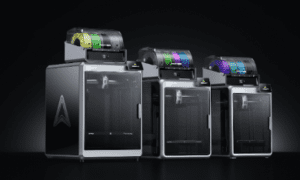Electric vehicles (EVs) are revolutionizing the way we think about transportation, offering an eco-friendly and efficient alternative to traditional petrol and diesel cars. But as any EV owner knows, charging can be a challenge—especially when your driveway doesn’t quite reach the garage outlet or when your parking space is just a bit too far from the nearest charging station. That’s where the Type 2 extension cable comes in, offering a solution that enhances your home charging freedom.
In this blog post, we will explore the world of Type 2 extension cables for EVs. We’ll cover everything from safety standards and optimal usage to installation tips and smart charging strategies. Whether you’re a seasoned EV owner or new to the electric revolution, this guide will provide you with the insights and information you need to make the most of your home charging setup.
Understanding Type 2 Extension Cables
A Type 2 extension cable is an essential accessory for many EV owners. It acts as a bridge between your vehicle and a power source, enabling you to charge your car even when the two are not in close proximity. These cables are specially designed to handle high power loads, ensuring that your car charges quickly and safely.
One of the main advantages of using a Type 2 extension cable is its flexibility. With various length options available, these cables can reach across your driveway or parking area, making it easier to charge your EV at home. Additionally, they are compatible with most charging stations, providing a versatile solution for different charging setups.
When selecting a Type 2 extension cable, it’s important to consider the specifications that match your EV’s requirements. Look for cables that carry the appropriate power rating and are made from durable materials. This ensures a safe and efficient charging experience, no matter your vehicle model or the charging station you use.
Safety Standards and Best Practices
Safety is a top priority when it comes to charging your EV, and Type 2 extension cables are no exception. These cables must adhere to strict safety standards, ensuring that they are capable of handling the electrical load without overheating or causing damage.
To maintain safety, make sure that your extension cable has been tested and certified by a recognized authority. This certification guarantees that the cable meets all necessary safety criteria, protecting both your vehicle and your home.
It’s also essential to follow best practices when using your Type 2 extension cable. Avoid using extension cables that are too long, as this can cause a drop in voltage and potentially damage your vehicle’s battery. Additionally, inspect your cable regularly for signs of wear and tear, and replace it if necessary to prevent any safety hazards.
Optimal Usage of Type 2 Extension Cables
Using your Type 2 extension cable correctly can maximize its benefits and extend its lifespan. It’s important to ensure that the cable is compatible with both your EV and the charging station you plan to use. This compatibility ensures a seamless connection and optimizes the charging process.
Before plugging in your cable, check for any obstructions or debris that could interfere with the connection. Ensure that the plugs are clean and dry to maintain a secure and efficient connection every time you charge your vehicle.
Consider storing your extension cable properly when not in use. Keeping it coiled and away from direct sunlight or moisture will help maintain its integrity. A well-maintained cable will last longer and continue to provide reliable charging for your EV.
Length Options and Their Advantages
One of the features that make Type 2 extension cables so appealing is their variety of length options. Depending on your setup and needs, you can choose from cables of varying lengths, each offering unique advantages.
Shorter cables are ideal for close-range charging situations, such as when your garage outlet is just a few feet away from your EV. These cables are easy to manage and store, providing a convenient solution for straightforward charging needs.
Longer cables, on the other hand, offer greater flexibility and range. They are perfect for scenarios where your EV is parked further away from the power source, such as in a driveway or dedicated parking space. A longer cable ensures that you can always reach your vehicle, regardless of your home’s layout or parking arrangement.
Before purchasing a Type 2 extension cable, consider your specific charging needs and the layout of your home. Selecting the right length will ensure that you enjoy the full benefits of your extension cable without unnecessary hassle.
Compatibility with Different Charging Stations
Type 2 extension cables are designed to be compatible with a wide range of charging stations, making them a versatile addition to any EV owner’s toolkit. Whether you charge at home or on the go, these cables can seamlessly connect your vehicle to the power source.
It’s vital to verify that your extension cable is compatible with both your EV and the charging station you intend to use. Most extension cables on the market are designed to work with standard Type 2 connectors, but double-checking compatibility ensures a smooth charging experience.
By choosing a compatible Type 2 extension cable, you can avoid potential issues and enjoy consistent, reliable charging wherever you are. This compatibility makes these cables an invaluable accessory for any EV owner’s charging setup.
Practical Insights on Installation
Installing a Type 2 extension cable is a straightforward process, but there are some key considerations to keep in mind. First, ensure that both ends of the cable are properly connected before initiating the charging process. This connection is crucial for efficient and safe charging.
When routing your Type 2 extension cable, ensure that it is secured properly to avoid tripping hazards or potential damage. Using cable ties to fasten the cable along a designated path can help keep it organized and prevent it from obstructing walkways or driveways
Additionally, consider the routing of the cable to avoid tripping hazards or potential damage. Keep it neatly coiled when not in use, and ensure that it doesn’t obstruct walkways or driveways. Proper installation and maintenance will help you get the most out of your Type 2 extension cable.
Maintenance Tips for Longevity
Maintaining your Type 2 extension cable is essential for ensuring its longevity and continued performance. Regular inspections can help you spot any signs of damage or wear, allowing you to address issues before they become problematic.
Cleaning your cable periodically is a simple but effective way to maintain its integrity. Use a soft, damp cloth to wipe away dirt and debris from the connectors and cable surface. Avoid using harsh chemicals or abrasive materials that could damage the cable.
Storing your extension cable correctly is also crucial for its longevity. When not in use, keep it in a dry, cool place away from direct sunlight. Coiling the cable neatly prevents kinks and tangles, preserving its structure and functionality over time.
Smart Charging Strategies for Home Users
Smart charging strategies can enhance the efficiency and effectiveness of your home charging setup. By optimizing your charging habits, you can maximize both your EV’s performance and the lifespan of your Type 2 extension cable.
One effective strategy is to charge your vehicle during off-peak hours, when electricity rates are lower. This approach not only saves you money but also helps reduce the strain on the electrical grid during peak demand times.
Another smart charging tactic is to monitor and manage your charging frequency. Regularly charging your EV to around 80% of its capacity can prolong battery life, as full charges are not always necessary for daily use.
By adopting smart charging strategies, you can make the most of your home charging setup while extending the life of your Type 2 extension cable and EV battery.
Conclusion
The Type 2 extension cable is a game-changer for EV owners looking to maximize their home charging freedom. With its versatility, compatibility, and ease of use, this cable offers a practical solution for a range of charging scenarios.





























